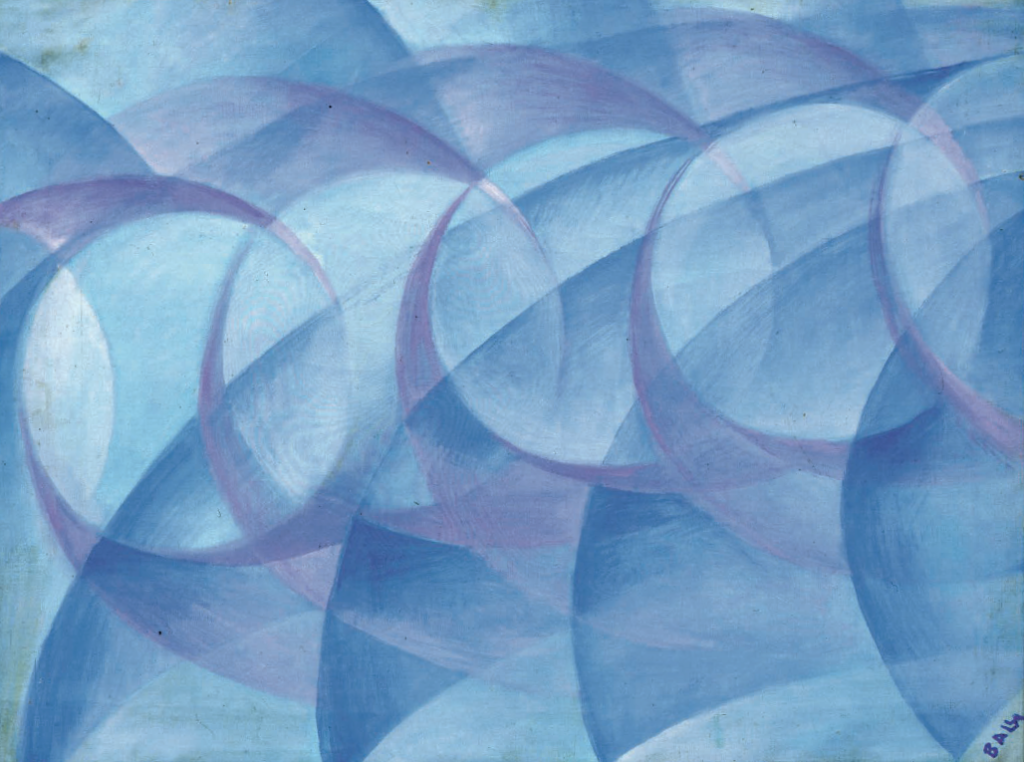Giacomo Balla
On April 30, 1917, Feu d’artifice (Fireworks), a performance conceived by Giacomo Balla during the years he participated in the Futurist movement, was produced at the Teatro Costanzi in Rome. Set to music by Igor Stravinsky and directed by Sergej Djagilev, Balla’s work presented for a few minutes, in place of live actors, a set composed of solid geometric wood forms that were covered with fabric and colored paper. Inside these pyramid and prism forms, Balla had placed electric lights, which operated rhythmically, creating unexpected effects of movement. Violet and white colors appeared on the left part of the set; red, blue, and yellow in the center; and green on the right. The artist explained that the elements represented “the moods of fireworks” that Stravinsky’s music had suggested to him. This theater of alogical architectural forms, animated by continuous plays of light, exemplified the aim, formulated in 1915 by Balla and Fortunato Depero, in the manifesto Ricostruzione futurista dell’universo (Futurist Reconstruction of the Universe), to free art to participate in life, to arouse the playful instinct of humans. The performance lasted only three minutes, in keeping with the principles of a theater born of intuition and capable of condensing multiple situations and ideas into a few moments, as proclaimed by Filippo Tommaso Marinetti, the theoretician of the Futurist movement, in the manifesto Il Teatro Futurista Sintetico (Futurist Synthetic Theater), 1915. According to Marinetti, Futurist theater, in fact, was to be “A-technical, Dynamic, Simultaneous” and “Autonomous, Alogical, Unreal.”
The elements that make up the set for Feu d’artifice were reconstructed at the Castello di Rivoli on the occasion of the exhibition Sipario/Staged Art, 1997, which addressed the close relationship between theater and the visual arts. These elements were based on more than twenty sketches of designs for the set held by the Museo Teatrale alla Scala in Milan. Balla also created a self-portrait, now lost, in which some of the forms from Feu d’artifice appear against the background.
[MB]


